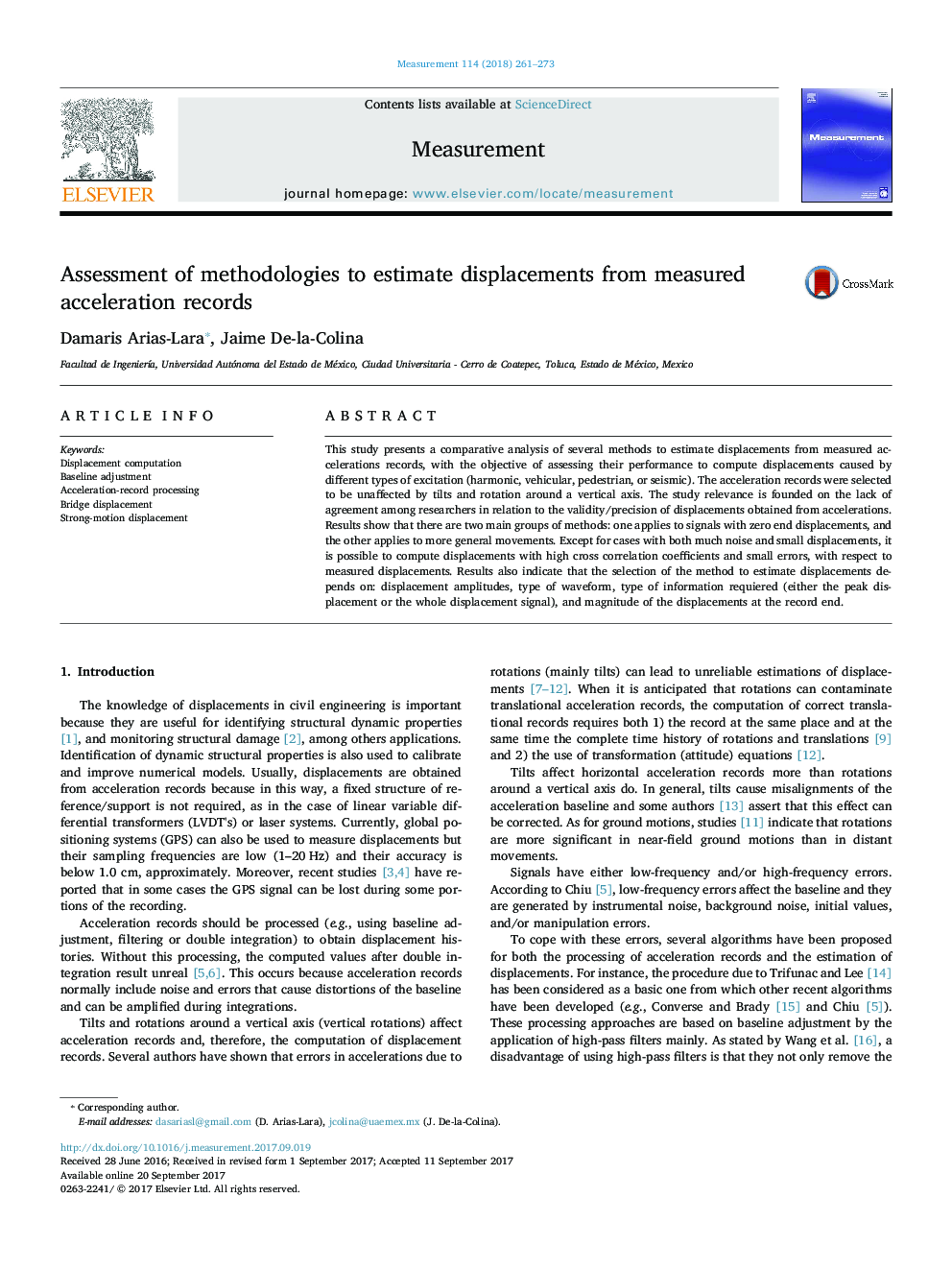| Article ID | Journal | Published Year | Pages | File Type |
|---|---|---|---|---|
| 5006322 | Measurement | 2018 | 13 Pages |
Abstract
This study presents a comparative analysis of several methods to estimate displacements from measured accelerations records, with the objective of assessing their performance to compute displacements caused by different types of excitation (harmonic, vehicular, pedestrian, or seismic). The acceleration records were selected to be unaffected by tilts and rotation around a vertical axis. The study relevance is founded on the lack of agreement among researchers in relation to the validity/precision of displacements obtained from accelerations. Results show that there are two main groups of methods: one applies to signals with zero end displacements, and the other applies to more general movements. Except for cases with both much noise and small displacements, it is possible to compute displacements with high cross correlation coefficients and small errors, with respect to measured displacements. Results also indicate that the selection of the method to estimate displacements depends on: displacement amplitudes, type of waveform, type of information requiered (either the peak displacement or the whole displacement signal), and magnitude of the displacements at the record end.
Related Topics
Physical Sciences and Engineering
Engineering
Control and Systems Engineering
Authors
Damaris Arias-Lara, Jaime De-la-Colina,
